IT ALL BEGAN ON SEPTEMBER 24, 1948. Then the Honda became widely known for its continuous improvement, innovation and dedication to purpose. Without possibly realizing it at the time, on September 24, 1948, the 34 workers of Honda Motor Company they made history in the field of mobility.
A few months later, after its release Dream D-Type, of the first motorcycle built by the company, o soichiro Honda he met the ideal partner in his person Takeo fujisawa.
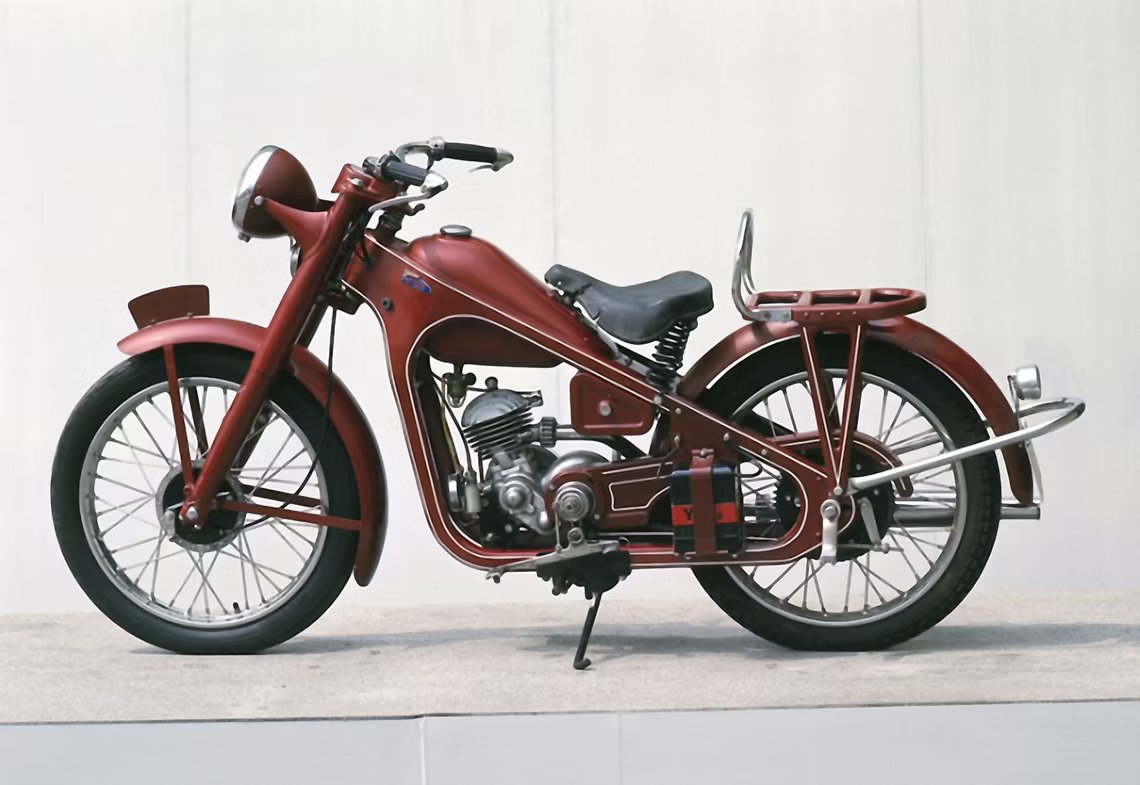
Ο fujisawa became CEO, and after a few months, the company raised its capital for the first time, despite the difficult economic situation that post-war Japan was experiencing. A quarter of the new investment came from himself fujisawa, who was reasonably considered to be its co-founder Honda. The collaboration was sealed with a common vision: To become the Honda the largest motorcycle manufacturer in the world.
THE PRINCIPLE OF SUCCESS. The Cub F-Type it was a bicycle with a 50cc two-stroke auxiliary engine. A trademark was "a red engine with a white fuel tank". Its fresh and elegant aesthetic suited the majority of the Japanese public like a glove. Designing his commercial strategy, Mr fujisawa realized that there was a powerful distribution network that other motorcycle manufacturers had not yet tapped into: bike shops.
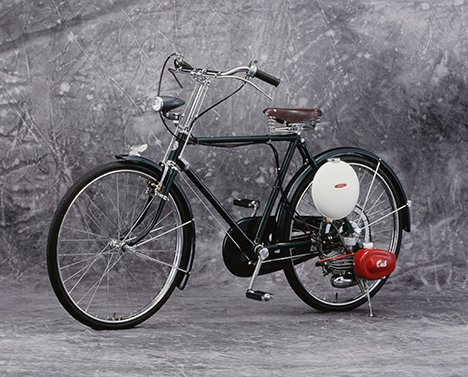
He contacted over 50.000 bike shops across the country by mail. THE fujisawa he designed the brochure and his efforts paid off. With a woman figure at the wheel, the Cub F-Type it was promoted as a bike that could be ridden by men and women. The model was sold in more than 15.000 bicycle shops and was widely used throughout Japan.
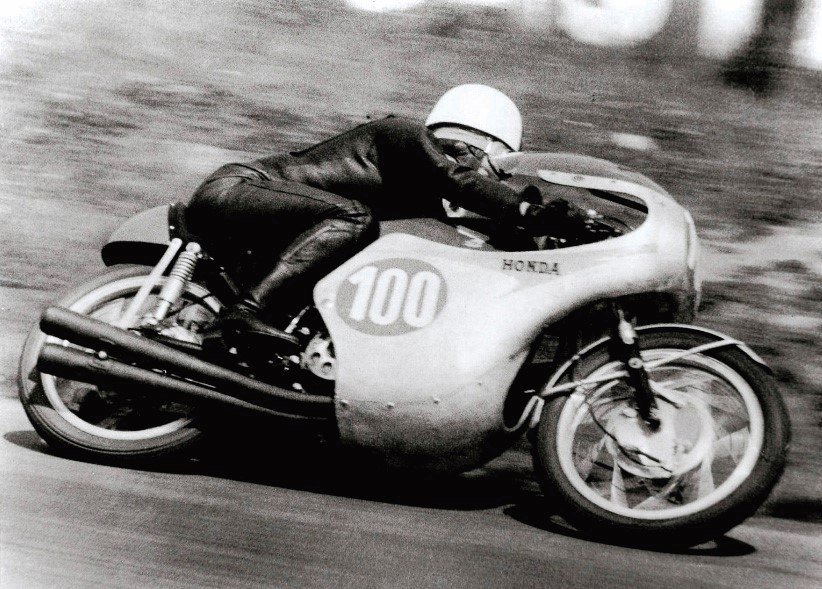
In 1949, the two-year-old Honda Dream D Type of 98 cc it was the first mass-produced motorcycle and was a forerunner of its future technological development Honda: incorporated advanced features into a robust frame, with semiautomatic clutchless transmission, which made it more efficient against the competition. Also, the design and the burgundy color highlighted its uniqueness, as black dominated all motorcycles at that time. With the Dream D TypeThe Honda laid the foundations for the future of the brand.
YOU MEET THE NICEEST PEOPLE OVER ONE HONDA. Ten years later, the original dream became a reality. Despite the problems they faced for some time, Honda's founders never lost faith and indeed, with the outbreak of the Korean War (1950-1953), orders for engines skyrocketed.
Success came along with the legendary Super Cub C100, introduced in August 1958. The Super Cub CThe 100 has continued to be produced continuously ever since and is the highest production motorcycle in history. The advertising slogan "You meet the nicest people on one Honda”, changed the world's mindset and perception of motorcycles forever. For the first time, the Honda established the motorcycle in the world's consciousness as a practical, clean, comfortable, socially acceptable, everyday means of transportation.
This was a turning point for her Honda, the entire industry and urban mobility, while introducing a key strategic tenet for the brand: the global vision. The now global outlook translates into a strong commitment to offering high quality products at prices to suit all pockets and all travel needs of customers around the world.
COMING TO THE USA. A year later, in 1959, with his success now assured Super Cub, its expansive ambitions Honda they led her to the USA and specifically to the coast of California where she founded it American Honda Motor Co. Inc. in Los Angeles. 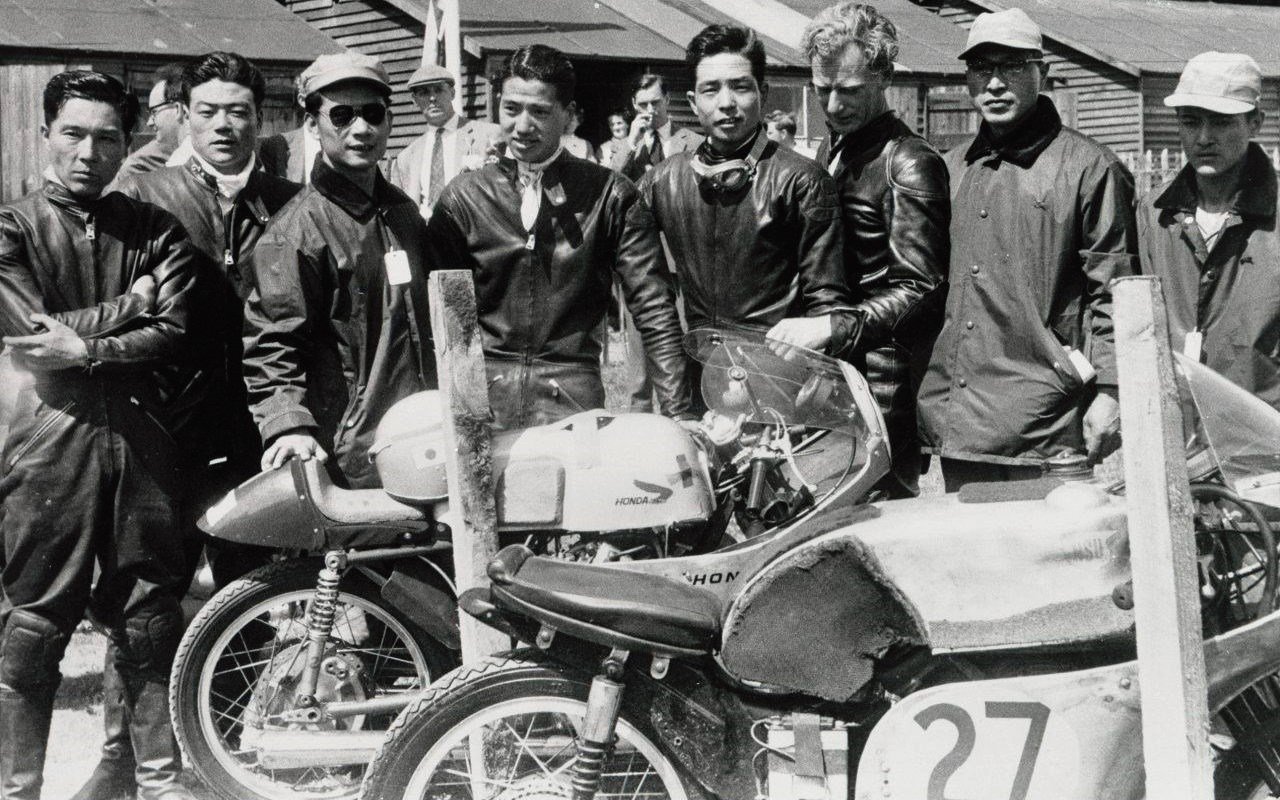
SYNONYMOUS OF COMPETITIONS. "The fighting spirit that springs from me no longer allows me to look away. I made the decision of the year to run in the TT", the most famous international race where the Honda planned to compete with the leading manufacturers of the time. In 1954, Mr soichiro he shared his dream with his team clearly stating his intentions. It took five years to implement the program. Thus, in 1959, in its first appearance Honda in the famous TT, its riders Honda they finished in 6th, 7th, 8th and 10th place with Honda RC142.
These results gave the Honda the Manufacturer's Title. But his ambitious plans soichiro Honda they concentrated on one and only goal: victory. This first race was the first step on the road to success. Just two years later, in 1961, the Honda captured her first two international titles in the 125 classescc and 250cc. Since then, the Honda competes at the highest, global level of racing on two wheels.
THE CONTINUATION ON FOUR WHEELS
THE SPIRIT OF IMPROVEMENT. The 1958 the Honda decided to build cars. The new decade offered to Honda the opportunity to join the club of successful manufacturers of the Japanese car industry. 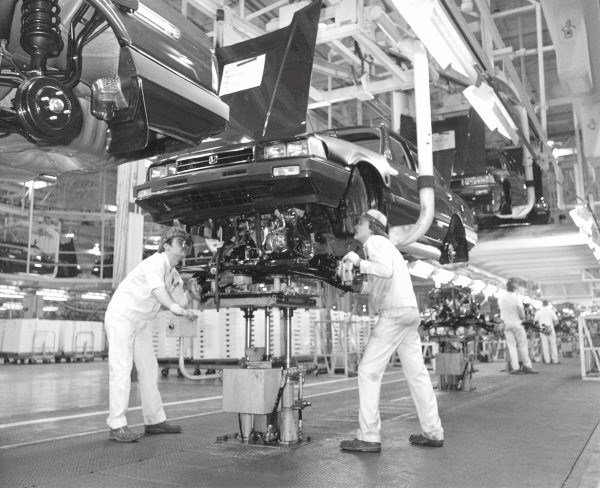
Development of the first prototypes was in full swing when, in 1961, Japan's Ministry of International Trade and Industry (MITI) introduced a bill to promote certain industries, which included the automobile industry, and if passed, would prevent new manufacturers from entering the domestic market. So that its activity is not affected by the implementation of the law in question, h Honda build the mini sports cars S360 and S500 and the mini truck T360, which were introduced at the 1962 Tokyo Motor Show. Eventually, the law MITI was never approved, but the Honda he had already taken a new step and was fully involved in the production of cars.
A TRACK THAT MADE HISTORY. It officially bears the name Suzuka International Racing Course and was built in 1962 as its test track Honda. It was designed by the Dutchman John Hugenholtz, who also created the track Jarama in Madrid. It is the oldest circuit in Japan and one of the few in the world with a figure 8 layout. Only a year after its construction, the Honda began her invasion of Formula 1.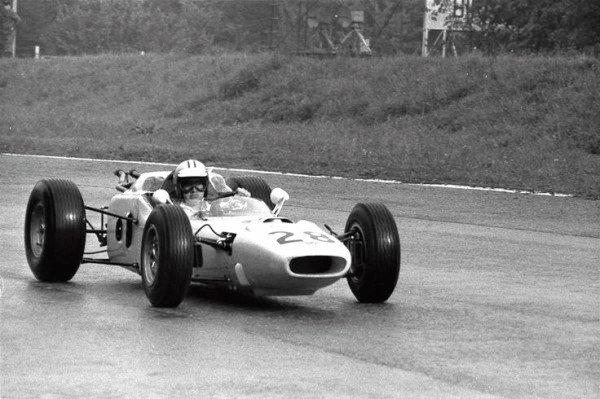
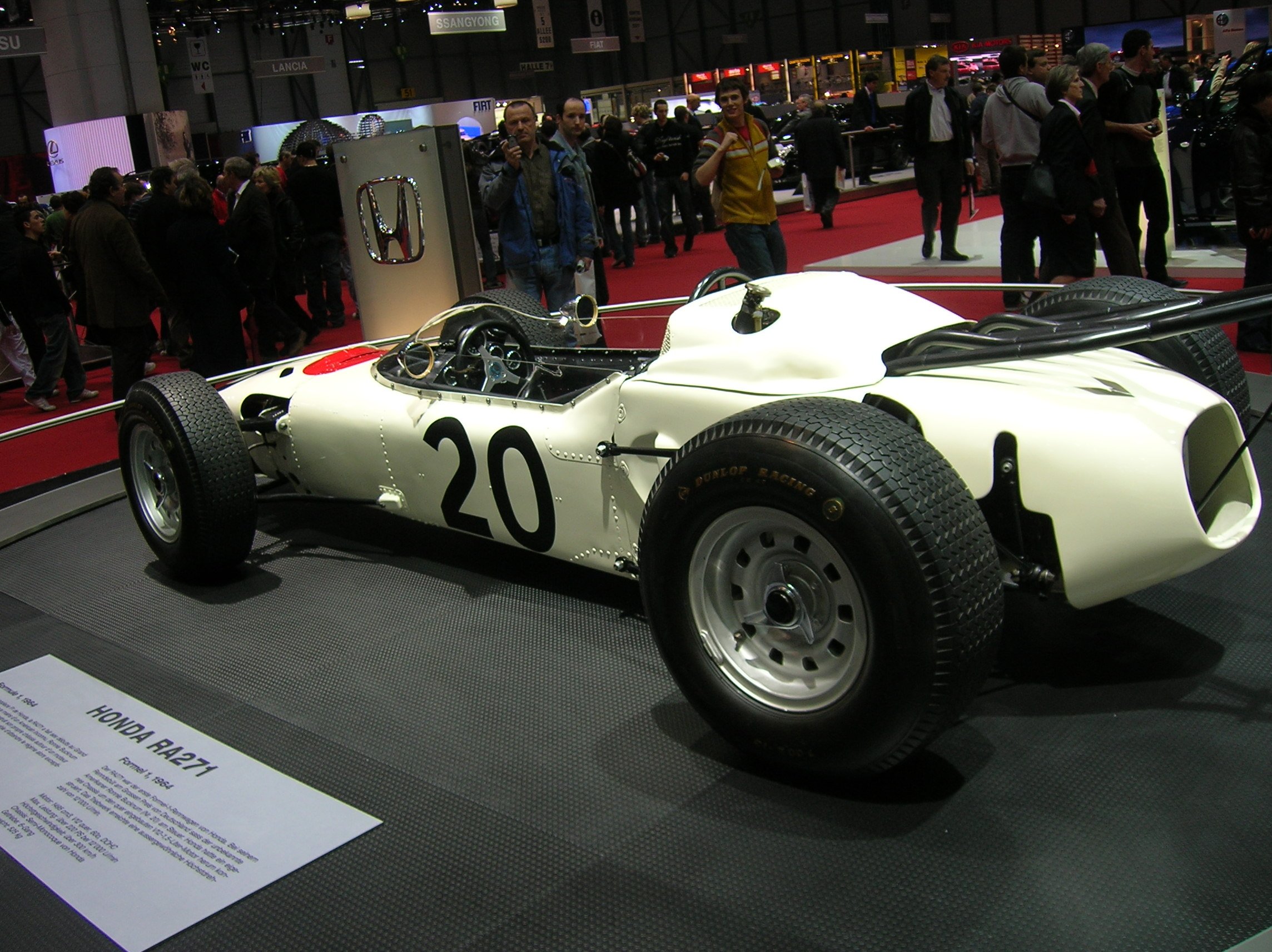
VIVA MEXICO! In 1960, when the soichiro Honda decided to take part in the games, h Honda it was still the youngest manufacturer in Japan and the first to venture into its world Formula 1. To win a race with a racing suit car of his own construction was one of the childhood dreams of the founder. And the first step to achieving this goal was the RA271. After exhausting preparation on her tracks Suzuka (Japan) and of Zandvoort (Netherlands), the team finally debuted with the RA271 in German GP of 1964 in Nürburgring, the most demanding track on that year's racing calendar. Painted ivory with a large red dot, symbolizing the sun of the Japanese flag, the car made history. THE Honda she was very quickly rewarded for her decision to build herself both the chassis of the car and the engine, With the Richie Ginther achieving its first victory in 1965 Honda in her fight F1 in Mexico. THE Honda became the first Japanese manufacturer to win one Large Price of F1 and all signs were favorable for a rapid upward trend. However, after his tragic demise Jo Schleser in 1968 at the helm RA302, h Honda withdrew from F1 until the 1980s.
KEI CARS. 1963, the Honda launched a campaign of widespread appeal, offering prizes to those who correctly guessed the price of the new one Honda S500. The company received over 5,7 million responses – a record for a campaign of this kind. In August of the same year, Honda introduced the mini truck T360, while in October it followed S500. The Honda N360, launched in 1966 amid the motor vehicle boom in Japan, was the first minicar (Kei Parts and accessories) of the mass-produced company. Mini vehicles were already popular in Japan, but according to its habits, the Honda stormed the market causing a sensation.

The NThe 360 was also the first minicar to offer an optional automatic transmission Hondamatic. With the N360, h Honda took full advantage of the technical specifications and size restrictions imposed by the legislation on small vehicles: cubic capacity 600cc, maximum length 3,4 meters, height 2 meters and width 1,48 meters. Her engineers Honda they managed to deliver sports car-like power and a surprisingly spacious interior. And all this at a much cheaper price than its competitors. The N360 embodied the corporate values that best expressed its philosophy Honda: 'Male Maximum, Machine Minimum'.
LAUNCH IN HAWAII.
In 1969, just months before Neil Armstrong set foot on the moon, the iconic Honda N600, a more powerful variant of it N360, became the company's first car sold in the US market. Beginning its commercial career in Hawaii, the car began to be available from Honda America through the network of representatives that had already been created by Honda for her motorcycles. At the same time, her effort was starting Honda to forcefully enter the American car market by claiming its own share. Selling cars to motorcycle dealerships was unusual for the time, but the Honda it could not create a car-specific network until its arrival Civic the 1972.
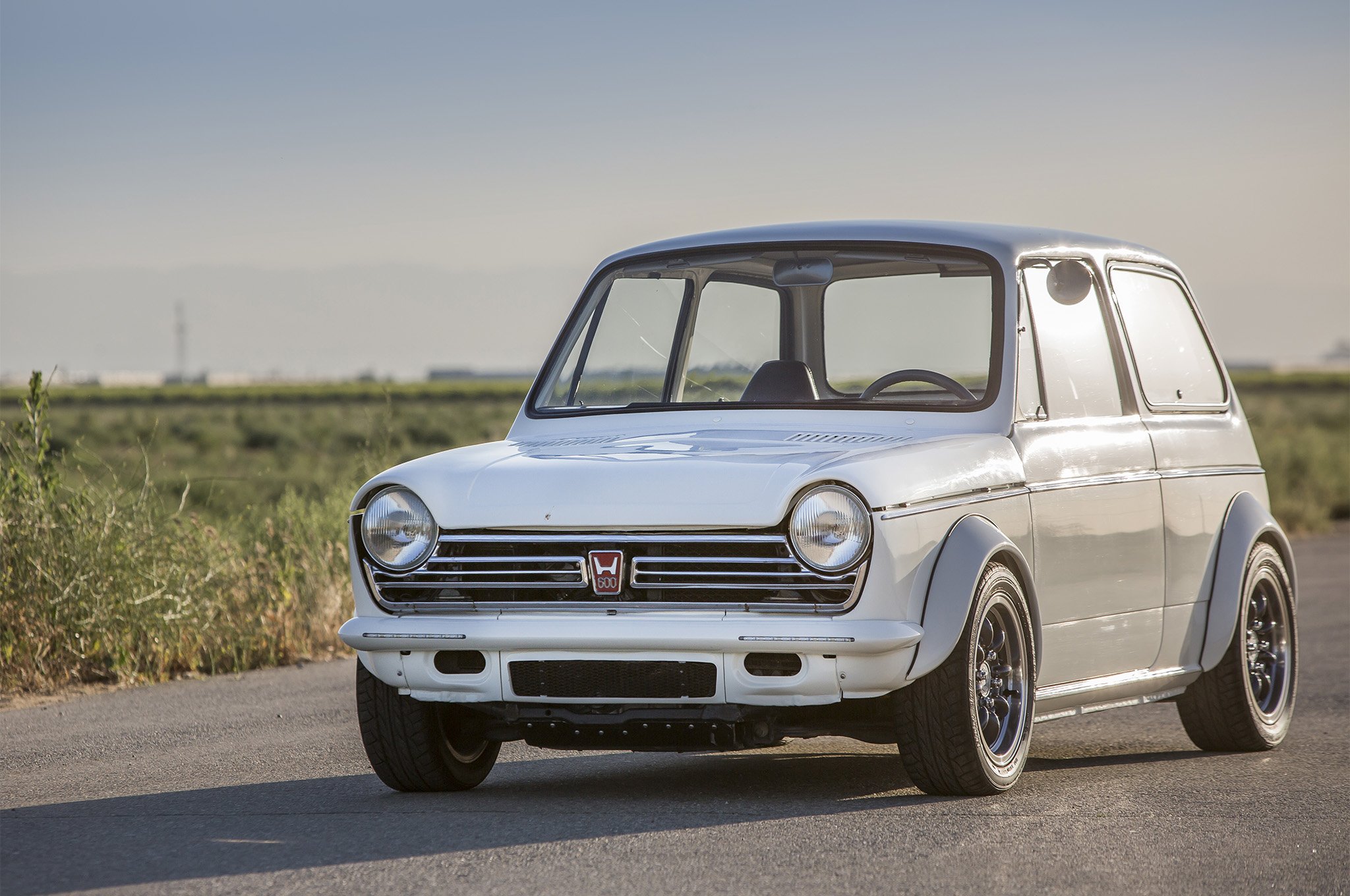
FROM JAPAN TO THE REST OF THE WORLD
THE AMERICAN DREAM. In the winter of 1952, Mr soichiro made a drastic decision that was to shape the future of the company: entering the USA. His goal was to invest 100% of his company's latest capital increase in importing machinery and tooling to produce high-quality components worthy of his ideas.
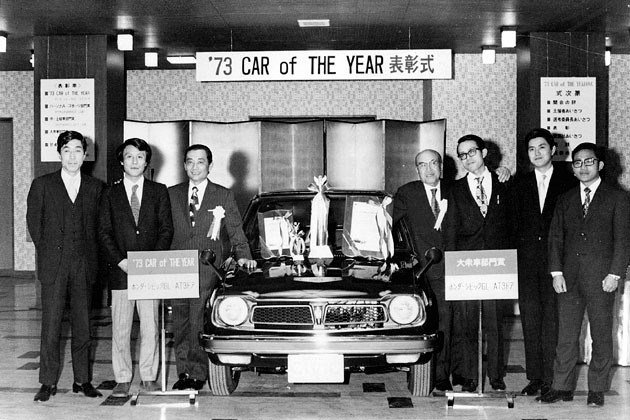
Ο COMING TO THE EUROPE. 1962, the Honda built its first factory outside of Japan, in Belgium. It was inaugurated the following year by himself soichiro Honda to preside over the ceremony. THE Honda Motor Co. it was only 15 years old and already a global company. In 1969, the Honda made a major step forward by becoming involved in the production of large displacement motorcycles, with the first CB750 Oven.
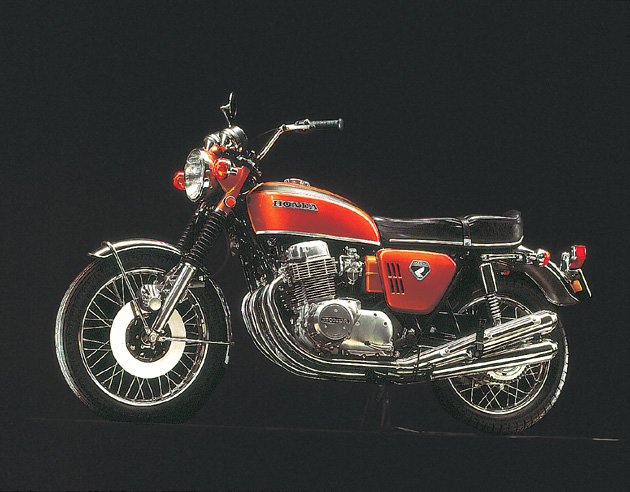
At the time it was considered the most advanced motorcycle in history. It was the first to go into mass production with disc brakes and electronic ignition. Its superior performance, excellent handling and high build quality are some of the elements that earned it the title of the first superbike in history and soon emerged in an unrepeatable best-seller.
THE BIRTH OF A LEGEND. In the 70s, there was a growing environmental awareness and in the United States, emissions legislation was tightened in an effort to improve air quality. In this direction, the Honda took a step that shaped the philosophy of the brand.
Honda was still a relatively small company, but it was one of the first to position itself on the side of public bodies and citizens in the fight against pollution. Featuring the first engine with CVCC technology, the Civic emerged with a green mission: to show the automotive industry that it could not only meet the stringent regulations imposed by the US Environmental Protection Agency, but that it was also imperative to raise the bar even higher. of the industry.
The Civic it was a huge commercial success in terms of sales and was honored with multiple awards. In Japan, it became the first model to win the Car of the Year title for three consecutive years: 1972, 1973 and 1974. But its popularity was not limited to its homeland. In Canada, for example, it was the most imported car for 28 consecutive months between 1976 and 1978.
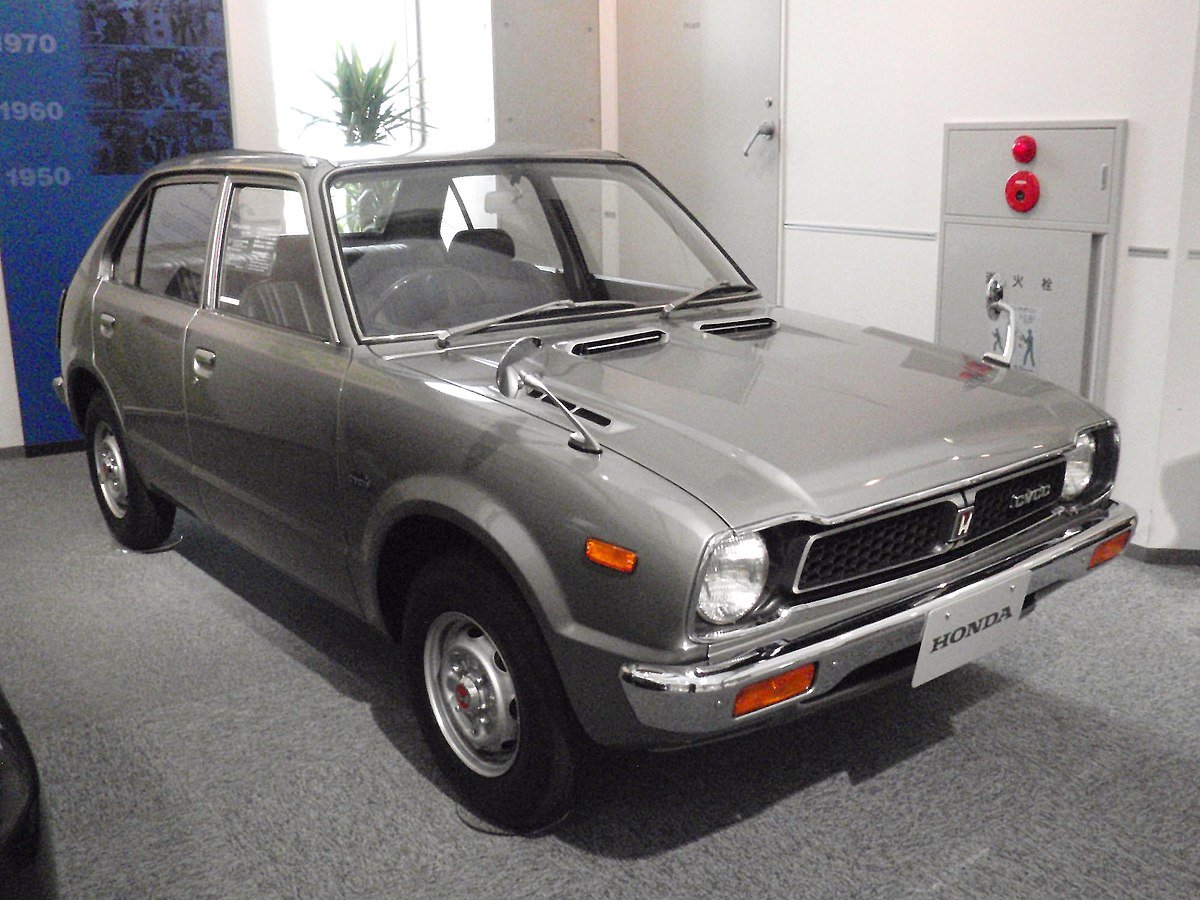
AN UNEXPECTED FAREWELL. In October 1973, which coincided with her 25th birthday Honda and the hopeful messages from Civic, the two founders, soichiro Honda and Takeo fujisawa, they left at the same time. Upon assuming their new 'lifetime' positions as 'Senior Advisors', the implementation of a new management model began that would test the company's mettle. The step marked the end of a strategically important process that had begun three years earlier with the creation of 'collective leadership', where a group of four senior managers would lead the transition.
TOWARDS THE GLOBAL DREAM. "If you're not No. 1 in the world, you can't be No. 1 in Japan." When the soichiro decided to take a risk and import tools in large quantities, he had realized the logic of the international market, which was going through the phase of continuous globalization. More than two decades later, in February 1978, the Honda of America Manufacturing (HAM) in Ohio, USA, with the main purpose of building a motorcycle production factory.
After a year and a half, CR250R rolled off the production line as its first motorcycle Honda which were manufactured in the USA. Shortly thereafter, the company began construction of an automobile manufacturing plant and achieved a new milestone in its global expansion in 1982 with the new Agreement, the first Japanese car built in the US
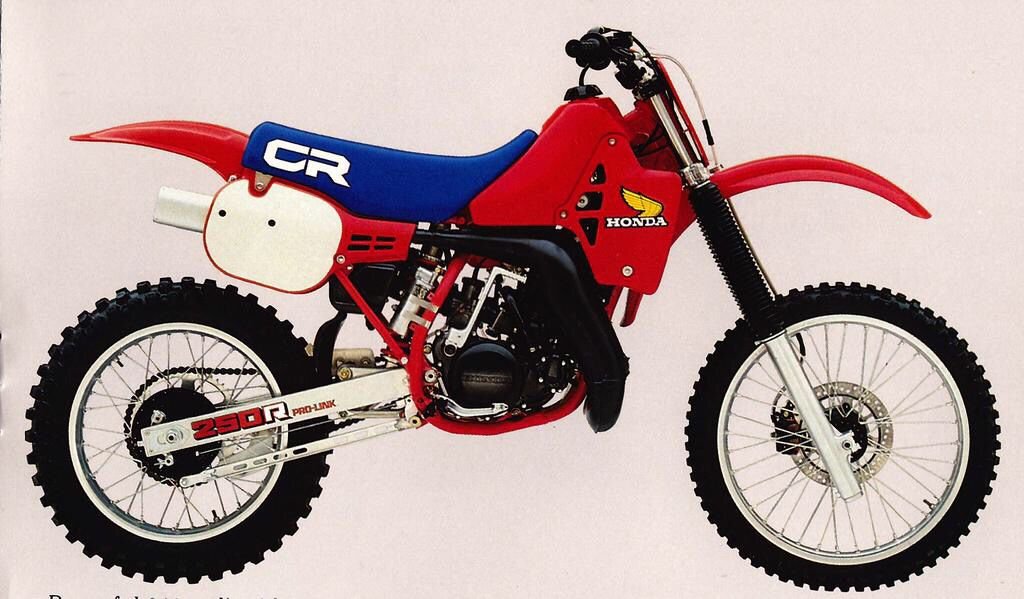
PIONEERS
'ON PAPER'. After his success Civic, the public demanded a bigger one Honda. In 1976, it arrived Honda Agreement, shaking up the waters of the automotive industry with a new automotive philosophy, being affordable, sporty and efficient. In addition, the Agreement it featured what is believed to be the first in-car navigation system. The Electro Gyro-Cator used a gas gyroscope (containing helium in a vacuum) combined with a servo to determine where the vehicle was and how fast it had traveled. The display was similar to that of a submarine radar system, with a transparent map showing waypoints. Although he may not fully realize it, in 1981 Honda invented the first map-based vehicle navigation system, long before the advent of GPS satellite navigation systems.
AGAIN IN WINNING PROCESS. Her long-awaited return Honda in the races took place in 1983, this time as an engine supplier for the teams Spirit, Williams, Lotus, McLaren and Tyrell. It was a golden era, with six consecutive constructors' titles with the Williams (1986 and 1987) and McLaren (1988 – 1991), as well as five driver titles with Nelson Piquet (1987) Ayrton Senna (1988, 1990 and 1991) and Alain Cheers (1989). In 1988, its cars McLaren-Honda they won 15 of 16 games, unprecedented in a season F1. OR Honda won the Constructors' Championship, o Ayrton Senna was declared World Champion and his teammate Alain Cheers came second.
THE 80s: UNBELIEVABLE INVENTIVITY AND TECHNOLOGICAL CREATIVITY. During this decade, the Honda strengthened its leading position as a manufacturer of large displacement motorcycles. between the V4 models that stood out were VF750F, which gave way to the VFR750 (1986), and the VFR750R, the legendary RC30 that incorporated technological innovations such as the single-arm scissor and titanium connecting rods. 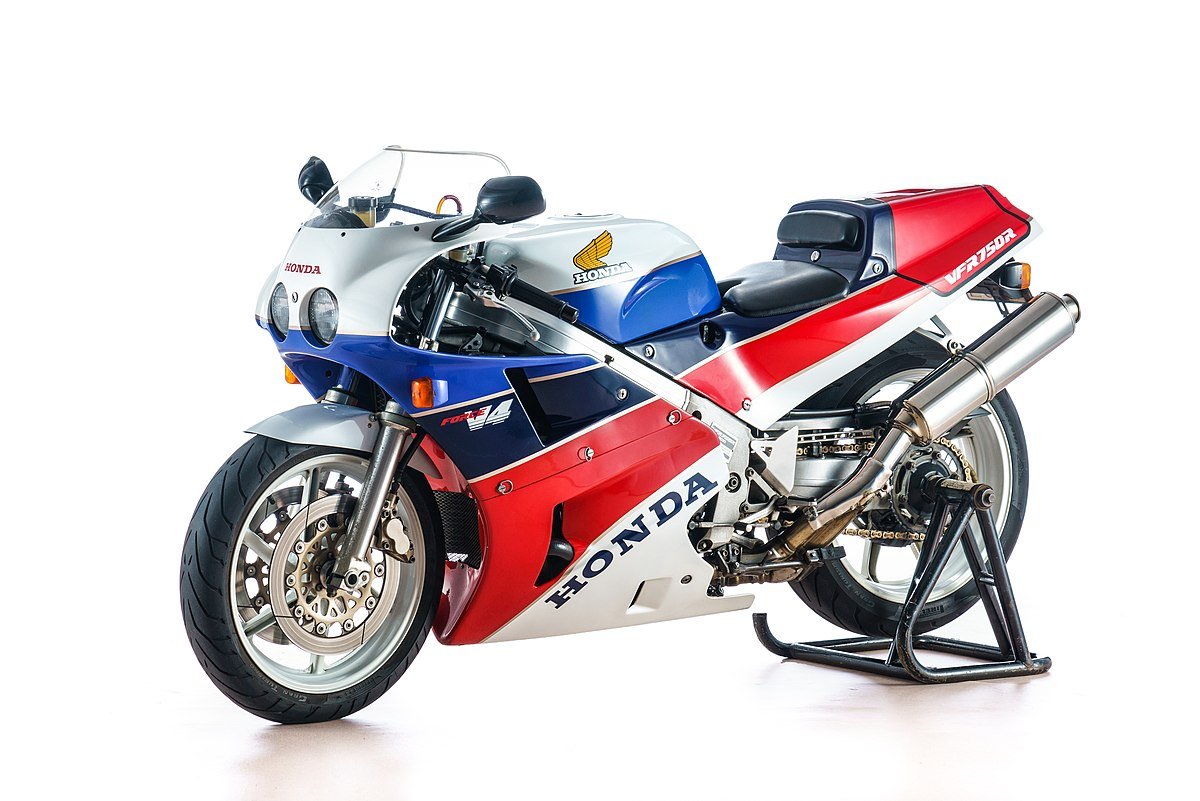
Honda surprised the world with the CX500 Turbo (1981), a turbocharged V-twin model with electronic fuel injection. In the category between, the amazing XLV750R appeared on the market in 1983, and in 1988 gave way to XRV650, the first model of the popular family Africa Twin.
When it comes to in-line models, the heritage of the iconic CB750 Oven and the impressive 6-cylinder CBX1000 morphed into the legendary acronym CBR, with which the Honda revolutionized the range of 600, 400 and 250 cc sports bikes. and would constitute from 1992 onwards the basis of another, particularly important model: the CBR900RR. The Honda also continued to develop models with boxer engines in series Gold Wing, which was originally a four-cylinder and in the late 80s became a six-cylinder. At the same time, with all these creations and with the air of a successful course in the races Large PriceThe Honda presented two two-stroke models of the series NS, with an engine capacity of 250cc. and 400 ml., which brought her to the fore NSR250 in 1986, one cult model that marked an entire era in Motorcycle history.
THE MODEL THAT DEFINED HIS GENERATION. Building on its motorsport successes, in 1986 the Japanese company introduced its first luxury car, the Honda Legend, and a brand for the USA under the name Acura. Therefore, the Honda became the first Japanese car manufacturer to launch an independent premium Department.
In February 1989, the Honda present it NSX – a supercar that defied the competition and fundamentally shook the automotive industry with its own technology and design, exclusive innovations and its famous aluminum monocoque chassis. The result was a vehicle inspired by its technological solutions F1.

The NSX it became a technological standard and was the first Japanese supercar in the world market. It could complete the 0 – 100 km/h sprint in 5,7 seconds and its top speed reached 259 km/h. The NSX she was the embodiment of her success Honda in motor sports. Yes, the legendary driver Ayrton Senna he was personally involved in its development and was the one who introduced it with him Alain Cheers at the 1989 Geneva Motor Show.
SAYING FAREWELL TO A PECULIARITY. On August 5, 1991, the soichiro passed away at the age of 84. More than 62.000 people paid their respects to the Japanese engineer at a public ceremony in Tokyo that lasted three days without causing traffic problems. Its founder Honda he had joked about it: "After living my life as a car manufacturer, how could I cause a traffic jam on the day of my funeral?"
In 1992, a year after his death soichiro Honda, the brand once again revolutionized the world of two-wheelers by introducing the legendary NR750, a motorcycle with countless advanced technological solutions that had never before been implemented in a standard production model. One stood out V4 engine with oval pistons and 8 valves per cylinder, which produced 125 hp at 14.000 rpm. With the NR750, h Honda once again proved its immense technological capabilities as a manufacturer.
INNOVATIONS ON ALL FRONTS
THE POWER OF DREAMS. In 1989 the new one was released Honda Integra, equipped with the first engine DOHC VTEC. The legendary VTEC, who gave the impetus for the slogan "The Power of Dreams', was hailed as the first technology to provide a mechanism for adjusting the opening and sinking times of all four valves. This means that in cases where high performance is required, the valves are opened more and for a longer time. Currently, all its gasoline cars Honda, as well as motorcycles and jet skis contain one of the various versions of the system VTEC.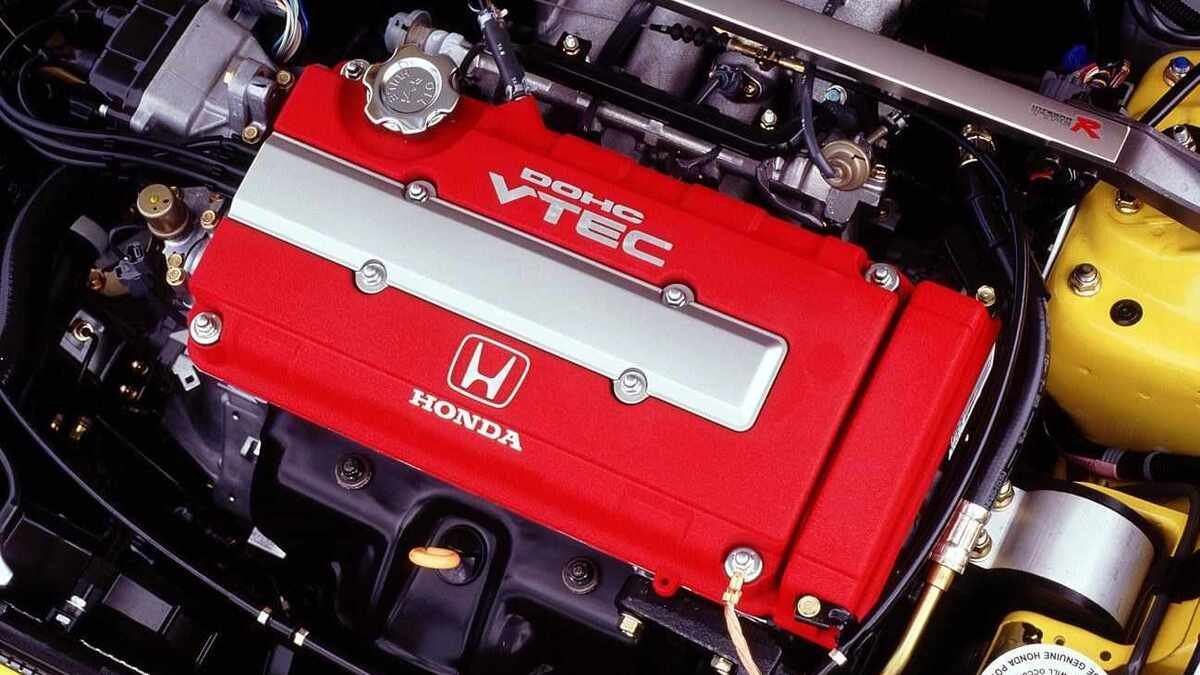
BEYOND PETROL. Her competitive spirit Honda led the company to become one of the first car manufacturers to participate in the World Solar Challenge, the well-known Australian event featuring exclusively racing cars powered by solar energy. For this purpose, the company designed the Honda Dream and later the Honda Dream II, which were made of lightweight carbon fiber-reinforced plastic and covered with solar cells. The blue bullet-shaped model broke many records and scored a number of victories between 1993 and 1996.
CERTIFICATE OF ORIGIN TYPE R. The arrival of the 90s coincided with its sixth generation Honda Civic. Unlike the others, it was the first to introduce editions to the model range Type R (from Racing). To date, only its purebred sports models Honda, As the NSX, are accompanied by this name.
To be eligible for this badge, the vehicle had to meet exacting criteria: it had to be fast, offer an exciting driving experience and make the driver feel involved in the driving. Not only that, but other features also had to be exciting in performance, such as the gearbox, braking system and steering system. Unnecessary accessories and soundproofing were discarded, as they could spoil the driving experience.
HONDA FOR THE ENTIRE FAMILY. The legendary Twin Ring Motegi circuit, built by Honda in 1997 and two hours from Tokyo, is well known to fans of Formula 1 and MotoGP racing. However, few know that the Honda track is not just a holy place for car racing enthusiasts, but also a theme park in the middle of nature with great appeal for families. The track is surrounded by forest that is part of the facilities, but the main feature that attracts visitors from all over the world is the Honda Collection Hall: three floors full of dreams, history and more than 350 legendary Honda models.

CELEBRATING 50ή ANNIVERSARY. For the celebration of half a century since its establishment, the Honda gave her own birthday present: the Honda S2000, a model that revived its sporty spirit S500. Heir to the lightweight series roadster – which started with the S500, S600 and S800 – the S2000 stole everyone's hearts when it was presented in prototype form at the 1995 Tokyo Motor Show under the name "Sports Study Model».
Admiration was to be expected: the stunning model had been designed in collaboration with the house Pininfarina and featured a high-revving naturally aspirated engine which offered an intense driving thrill.
ULTRA MODERN HYBRID. The Honda Insight, introduced in 1999, was the first hybrid car to go on sale in the US and Europe. The ultra-light, aerodynamic body was a major innovation, but even more important was the powertrain. In the Insight system was first adopted IMA (Integrated Motor Assist), which was incorporated into all of the brand's hybrid models for many years. Technology IMA it was based on a parallel hybrid system, whose mechanical simplicity and low weight allowed fuel efficiency superior to other hybrid systems.
BEYOND TIRES
A ROBOT AHEAD OF ITS TIME. One could say that ASIMO was born in the 21st century. However, its roots date back to 1986, when Honda's first robots were legs that tried to simulate human walking, so that systems could be developed to assist non-self-serving people or replace humans in dangerous tasks. At the turn of the century, Honda surprised everyone with a robot that was a real technological revolution in the world of humanoid robots and paved the way for the use of artificial intelligence in robotics. For the first time, a bipedal robot the size and shape of a normal human kept its balance perfectly when walking, and could even climb up and down stairs.
As a technology ambassador, Mr ASIMO visited science and technology museums, institutions and schools around the world, encouraging young people to immerse themselves in science while envisioning a future with robots.
THE FUTURE, TODAY. Η Honda had been developing a hydrogen fuel cell electric car since the 80s. The Honda FCX, introduced in 2002, was the first zero-emission car to go on sale in the US and Japan. The continuation of this research program of hers Honda is Clarity Fuel Cell, which can deliver the same performance as conventional vehicles. It was the first car to have the entire drivetrain, including the fuel cell, mounted under the hood.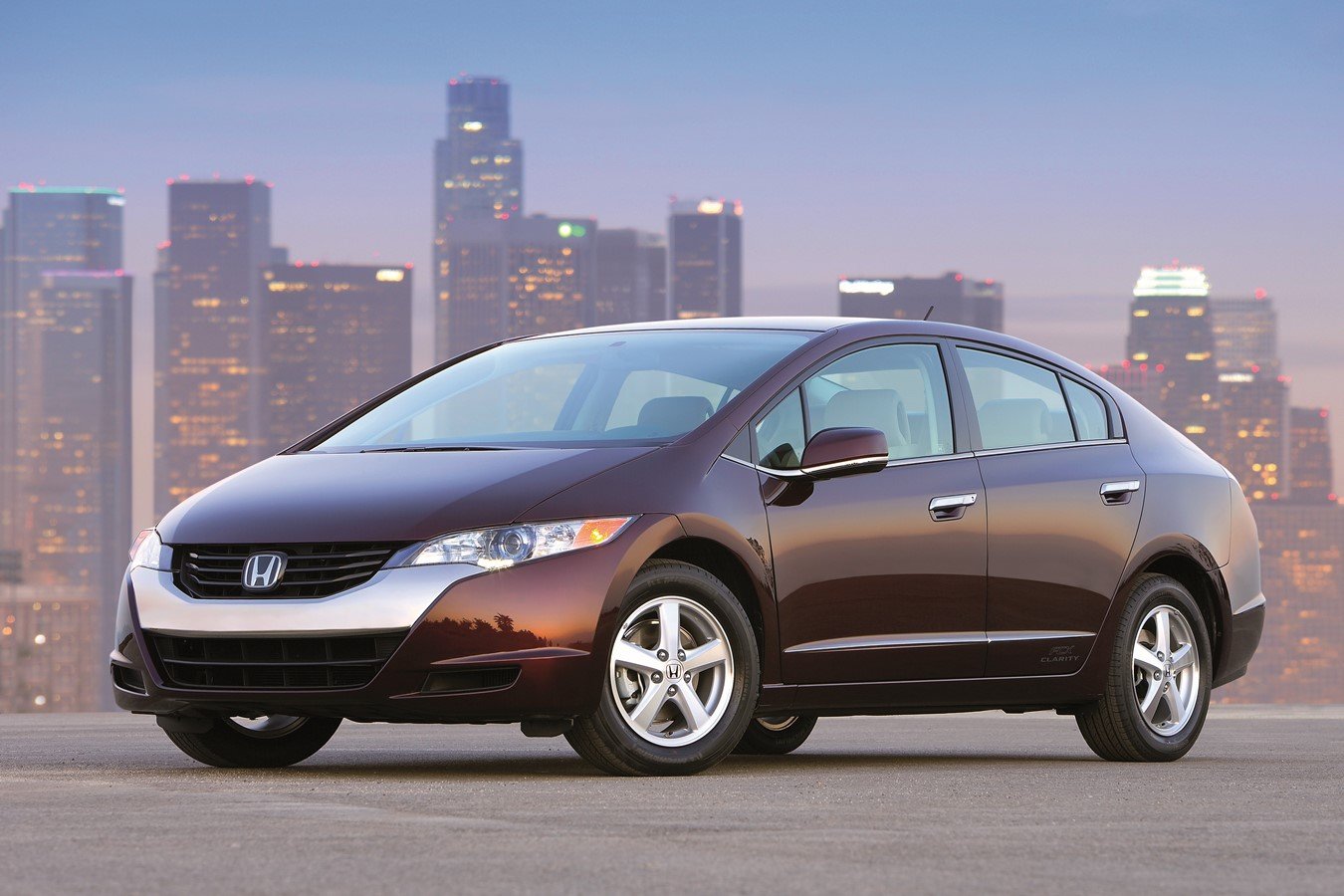
2014 marked a milestone in its history F1, with the introduction of hybrid engines. As a pioneer of this technology, its passion Honda for the games it was rekindled. After three years without positive results, the Honda joined forces with Team Toro Red and started testing the engines with her STR14 and RA618H.
2019, the Red Bull Racing follow her Toro Red choosing her engines too Honda. Just two years later, in 2021, the Dutch driver Max Verstappen was declared World Champion in the final race of the season.
CONQUERING THE EATHERS. Her occupation Honda with aviation began in 1986 with the creation of a department dedicated exclusively to this sector. The young aeronautical engineer was in charge Michimasa Fujino, who, along with a small team, moved to an advanced aeronautics research center in starkville of Mississippi.

One evening in early 1997, its future founder and CEO Honda Aircraft he had a brilliant idea. While he was half asleep and not having any draft paper, o Fujino he tore a sheet from a journal and wrote his idea on the back. His original design Fujino contains what is perhaps still his most distinctive innovation HondaJet: mounting the engine above the wing – a solution that freed up more space in the cabin and reduced the noise caused by engine vibrations. Testing continued in July 2005 HondaJet was presented for the first time before hundreds of thousands of visitors at the exhibition hall in Oshkosh of Wisconsin.
HER VISION HONDA. Honda defined its electric future in 2021. More than just a goal, it was a commitment to society, the environment and the company's ethical values. In 2020, it introduced the Honda e, which helped lay the foundations for this new vision and paved the way for the electrification of mainstream of its European models. The first all-electric Honda for the Old Continent, electrified versions of all existing models soon followed, culminating in the launch of the new Civic e:HEV in 2022.
But the commitment doesn't stop there. THE Honda pledged that 100% of its sales will be zero-emission vehicles by 2040 and that all its products and corporate activities will be carbon neutral by 2050. As proof of this goal, in 2023, the Honda presented three electrified models to the European market.
WITHOUT LIMITS. First the land, then the sea and the air and finally space. In 2021, a joint research project was announced between the Japan Aerospace Exploration Agency (JAXA) and the department R&D of Honda, in the framework of which the possibility of creating a circular system of renewable energy sources that will support human life in space will be investigated. The idea is that this system with its design signature Honda will provide oxygen, hydrogen, fuel and electricity to space station vehicles. How; Through a combination of high differential pressure electrolysis (which will produce oxygen and hydrogen using solar energy) and a hydrogen cell system that will produce electricity and water.





